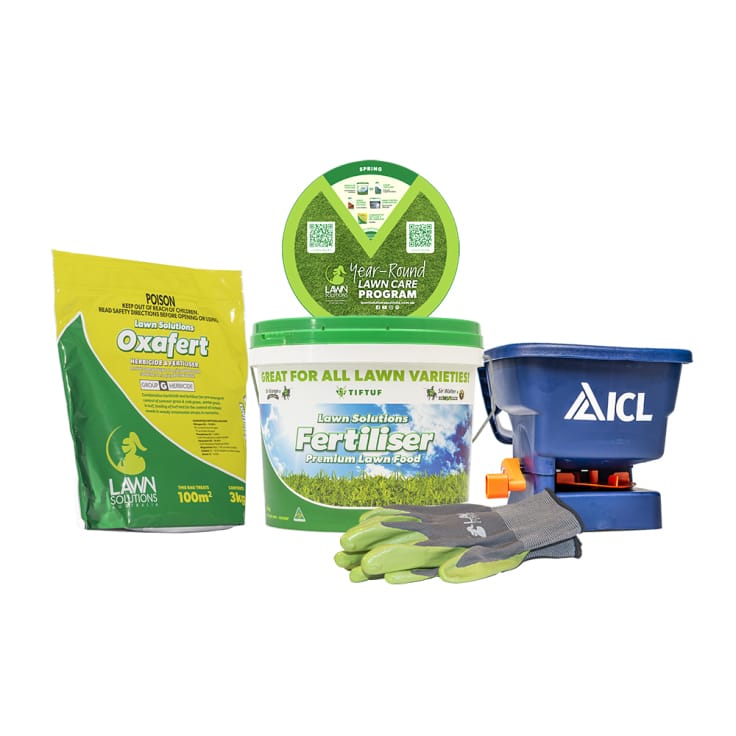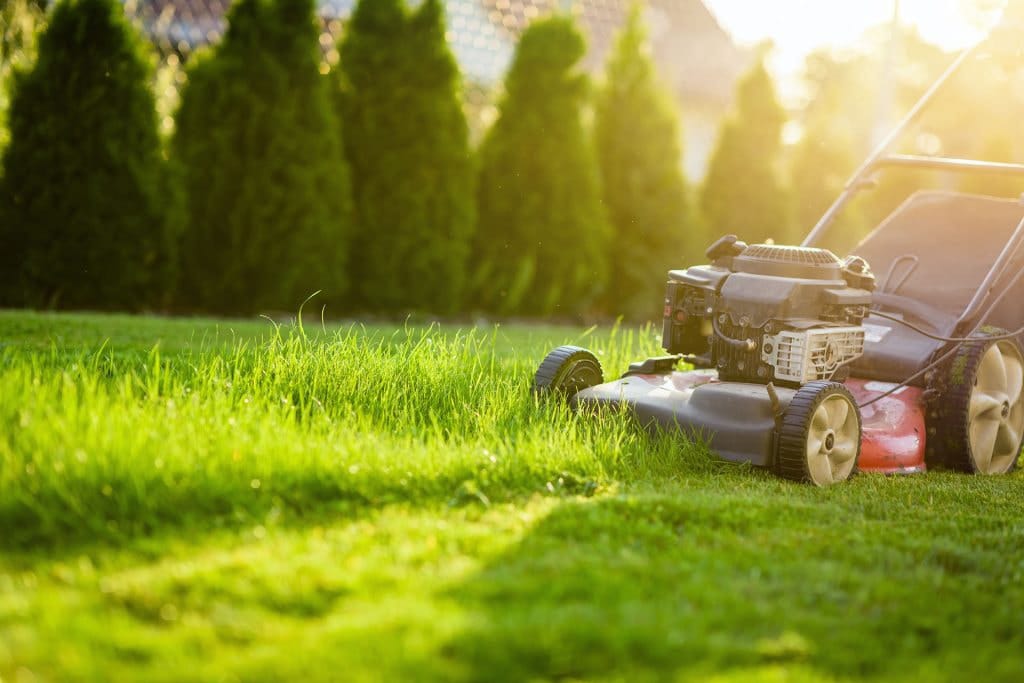How to Get Rid of Weeds in Lawn

24 September 2024
A healthy lawn will always combat weeds! It is extremely important to note that, regular maintenance is key to maintaining a weed free lawn. This includes regular mowing, watering and fertilising to promote healthy growth and crowd out any weeds!
Understanding Lawn Weeds
Heres a few common weeds you may have heard of or even have found in your lawn:
- Clover
- Creeping Oxalis
- Crowsfoot/Grabgrass
- Nutgrass or Mullumbimby Couch
- Bindii
- Winter Grass
- Cudweed
- Soursob
- Onion Weed
- Summer Grass
- Paspalum

Weeds are invasive and are the bane of all lawn owners! Weeds will compete with your lawn for essential resources such as oxygen, water and nutrients in the soil. Weeds will also result in the weakening of your lawn, making it more prone to other issues such as pest infestation, drought and disease.
Preparing to Remove Weeds
There are many different tools available on the market for removing weeds!
- Weed Pulling Tools
- Cultivators
- Shovels
- Garden Tool Sets
- Weeders
- Organic Weed Killers
- Weed Killers
Always ensure when using weed killers that you follow the label rates and instructions and wear the appropriate safety wear as recommended on the bottles.

How to Get Rid of Weeds Before Laying Turf
It is very important to ensure you remove all weeds or previous grass types prior to installing your brand new lawn! If you do not do so, these weeds and other grass types will make their way through your new lawn.

Step-by-step guide to weed removal prior to laying new turf:
- Clear the area of plants, grasses and any other unwanted weed growth. Pay particular attention to Kikuyu and Couch varieties as these are extremely invasive and may require more than one total kill application. Clearing the area is best done by spraying with a total kill, such as Roundup or Zero (Glyphosate). These needs to be complete a minimum of ten to fourteen days prior to laying your new lawn.
- Cultivate or Rotary Hoe dead matter into the existing soil base or export/remove the dead matter off site.
- Add in a turf underlay product to make sure you have the best base for your new lawn. We recommend 100mm as a good growing medium for a new lawn. Always be sure to double-check your pH levels to ensure it is still within the appropriate range of 5.5 to 7.
If you’d like to read more about proper soil preparation – read our blog on How to Prepare Soil for Turf.

How to Get Rid of Weeds in Lawn Naturally
There are benefits to controlling weeds in your lawn naturally. It helps keep your soil free from chemicals which in the long term is better for us, our families, our food and our planet.
Effective natural weed control techniques:
- Boiling water method
- Vinegar method
- Mulching gardens to suffocate weeds
- Removing weeds by hand
Preventing Weed Growth in Lawn
Keep your lawn healthy!
The obvious but not always easy solution to preventing weeds in your lawn is to keep your lawn healthy. A healthy lawn will combat any weeds due to it’s strong, deep and thick root system and dense growth that makes it hard for weeds to grow through.
- Use a fertiliser such as Lawn Solutions Premium Fertiliser. To find out more about when and how often to fertiliser read out latest blog How Often Should You Fertiliser Your Lawn.
- Protect with pre-emergents such as Lawn Solutions Oxafert. Pre-emergents are the best tool for preventing weeds emerging in your lawn. They will stop weed seedling from germinating in the soil.
- Be vigilant and treat weeds as soon as they appear in your lawn. One year’s seeds is seven year’s weeds! Pull any weeds that pop up in your lawn before they have a chance to go to seed. Once gone to seed, this is when they become particularly stubborn to eradicate.
- Mow regularly, some weeds can be suppressed with regular mowing.
- Keep your lawn healthy with a regular watering routine. For an established lawn, our recommendation is to water deeply once per week. Preferably in the morning, otherwise in the afternoons when the temperatures are ideal.
Chemical Weed Control Options
Selective herbicides are able to selectively treat broadleaf weeds or grassy weeds, depending on the chemical without harming your lawn, however non-selective herbicides like glyphosate will kill any plant they come into contact with.
Always make sure to identify what weed you have and what your grass type is to ensure you don’t accidentally kill your lawn! If you are unsure, please email photos through to us at info@allturfsolutions.com.au where we are able to help identify and recommend what product you can use to treat.
Be sure to always follow labelled rates and ensure you wear the appropriate safety wear as recommended on the products labels. Safety comes first!

Frequently Asked Questions
1. How long should I wait to lay turf after applying weed killer?
Needs to be completed a minimum of ten to fourteen days prior to laying your new lawn.
2. Can natural methods be as effective as chemical herbicides?
Yes and no, the natural way can be labourous, especially if removing weeds by hand. But you do have the benefits of keeping your soils free from chemicals.
3. What are the most stubborn lawn weeds and how to deal with them?
Some of the most invasive and stubborn weeds include Nutgrass, Mullimimby Couch and Creeping Oxalis. Nutgrass and Mullimimby Couch can be treated with products like Lawn Solutions Sedge Control whilst Creeping Oxalis can be treated with products like Bow & Arrow which is safe to use on Buffalo and Couch lawns.

Conclusion
The obvious but not always easy solution to preventing weeds in your lawn is to keep your lawn healthy. A healthy lawn will combat any weeds due to it’s strong, deep and thick root system and dense growth that makes it hard for weeds to grow through.
Always pick the best method that suits your lawn and your needs! If you prefer to hand remove weeds rather than applying chemical than have at it!! You will reap the benefits of a chemical free environment!
Remember – one year’s seeds, seven year’s weeds.
